Zipp introduced its first alloy wheelset in 1999, an unremarkable low profile training wheelset that was discontinued at the end of 2000. After a lag of five years, the company released another alloy training wheelset as part of its sponsorship program with team CSC, even adding the team’s logo to the rim, and it continued in Zipp’s catalogue until 2010.
The 101, released in 2010, marked a new direction for Zipp’s alloy wheelsets as the company applied its experience with aerodynamics to design a new 30mm alloy rim. Based on the toroidal profile developed for the 202, the 101 had a low spoke count (18/20, front/rear) and utilised the same high-end 88/188 hubset found in Zipp’s carbon wheelsets.
The 101 was updated in 2013 and renamed the 30. The rim profile was revised with a reduction in width as the 101’s tapered brake tracks were replaced by parallel brake tracks. The 88/188 hubset (that was made in the USA) was replaced by a hubset made in Taiwan while the spoke count remained unchanged.
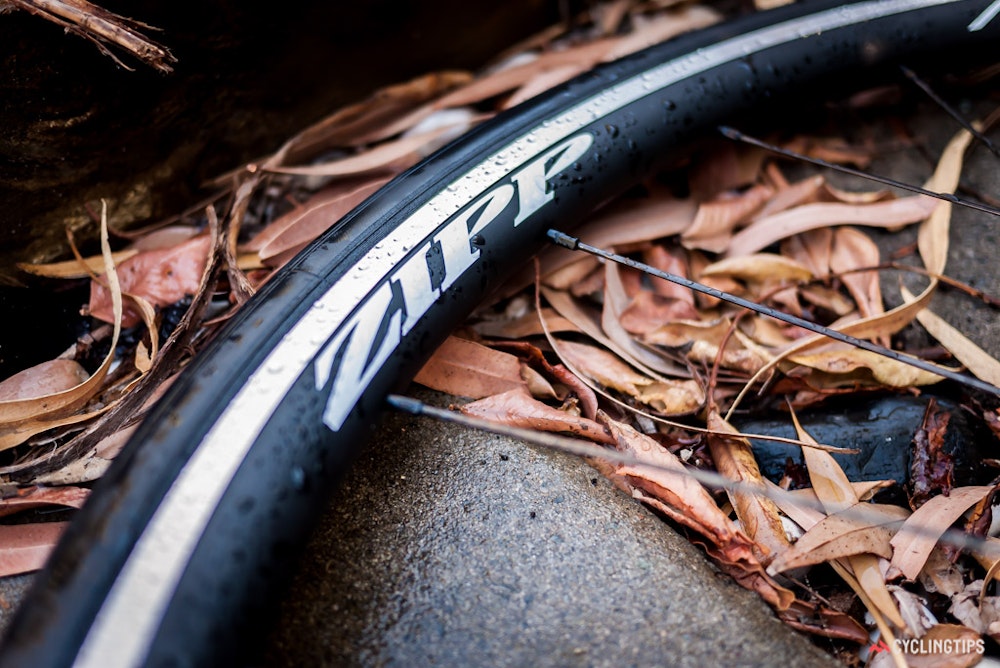
The year 2015 marked a new era for Zipp as the 88/188 hubset (and US hub production, it seems) was abandoned in favour of production in Taiwan. The move ushered in a fresh approach to hub design; it also resulted in a price drop for all of Zipp’s carbon wheelsets. Two versions of the new hub were created, one for rim brakes (77/177) and one for disc brakes (77/177D).
The introduction of the 77/177 hubset prompted an overhaul of the 30 to yield the 30 Course wheelset. The 30mm rim was redesigned (again), sacrificing a little height for extra width while adding tubeless compatibility. At the same time, a tubular version of the rim was also created, resulting in a suite of four 30 Course wheelsets: rim brake clincher, rim brake tubular, disc brake clincher, and disc brake tubular.
According to Zipp’s marketing, the 30 Course has been designed for the “new era of road cycling” that has seen the introduction of disc brakes and the rise of gravel riding. The inclusion of tubular rims also suggests the company is keen to appeal to cyclocross racers that don’t have the money for carbon race wheels.
For this review, I spent a few weeks riding the rim brake clincher version of the 30 Course wheelset, courtesy of Echelon Sports.
BEFORE THE RIDE
As mentioned above, the 30 Course rim is derived from Zipp’s Firecrest 202. The 30 Course rim is not quite as tall as the Firecrest 202 (26mm versus 32mm) but it has the same kind of toroidal shape with parallel brake tracks.

At 25mm wide, the external width of the 30 Course rim essentially matches the Firecrest 202, however it has a significantly wider bed (21mm versus 16mm). The extra width promises extra grip and comfort by allowing the tyres to expand a little more (2-3mm); it is also better suited to the wider tyres (35-40mm) favoured by cyclocross and gravel riders.
The 30 Course rim brake wheelset makes use of 18 straight-pull spokes for the front wheel, laced in a radial pattern while the rear wheel uses 24 spokes and a two-cross pattern. The disc brake version uses 24 spokes, front and rear, laced in a two-cross pattern. All versions have external alloy nipples.
It is interesting to note that Zipp has moved away from using slotted spoke holes in its hubs, so now all of the straight-pull spokes must be threaded through the hub shell or flange. Wheelbuilders and engineers will always argue over the best method to secure the spokes, but to my mind, this strategy is the most robust and capitalises on the advantage of straight-pull spokes.
Zipp has long made use of Sapim spokes for its wheelsets, and so it goes for the 30 Course wheelset. CX-Rays are used front and rear, a spoke that that is well regarded for its low weight and high strength. Some may consider the semi-bladed shape an aerodynamic gimmick but the forging that yields this shape also affords the spoke enormous tensile strength.
As mentioned above, the 77/177 hubset is Zipp’s newest design. The company has done away with adjustable bearing pre-load in favour of precision-machined components that don’t require any tools (other than an axle vice) for disassembly. As such, the hubset can be serviced quickly, which should be welcomed by cyclocross and gravel riders.
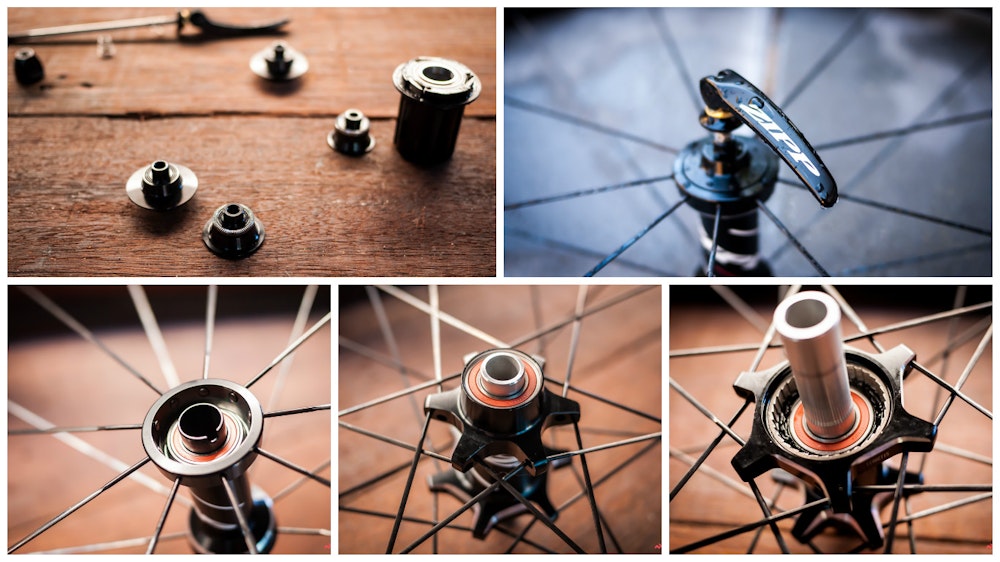
The 77/177 hubset manages to keep pace with emerging standards, so there is an option to fit SRAM’s XD driver to the rear hub. Buyers opting for the disc brake version will also be pleased to find that Zipp supplies axle caps to suit common through axles (12x100mm, 15x100mm, 12x135mm, 12x142mm).
There is just one finish for the 30 Course wheelset: black with Zipp’s bold white logos and a few red and white stripes. Buyers opting for the disc brake version will get larger logos in the absence of a machined brake track. In both cases, there’s not much to keep the eye interested, and indeed, some may find the bold branding off-putting.
The 30 Course rim brake wheelset sent for review weighed 1,650g (730g front; 920g rear) with the supplied rim tape sans skewers. Clearly, Zipp is not aiming to woo weight-weenies with this wheelset (besides, they have carbon wheelsets for that). Instead, the Course 30 presents as a heavy-duty race wheel that can fit a wide range of bikes and suit a variety of riders in the new era of road cycling.
The recommended retail price of the Course 30 wheelset in Australia is AU$1,599 and applies to every version of the wheelset (US-buyers can expect to pay US$1,000). Buyers have a choice of Campagnolo or Shimano/SRAM freehub bodies while the XD driver can be purchased separately.
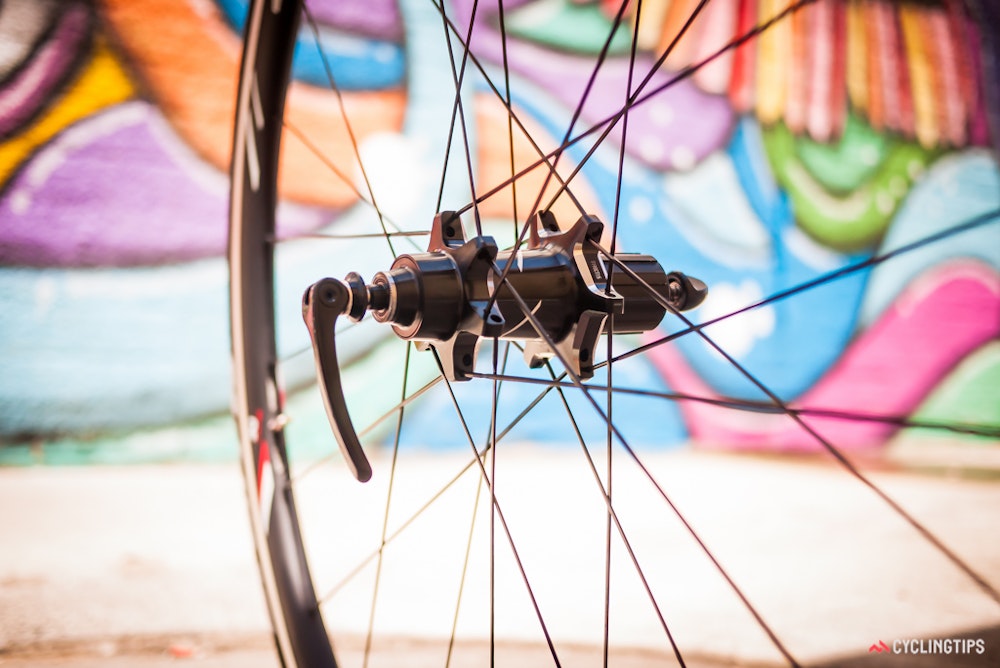
A pair of Zipp skewers is included with all 30 Course wheelsets. All clincher versions include rim tape and a pair of tubeless valve stems, while all disc brake versions are supplied with axle caps to suit 9mm quick release skewers as well as 12x100mm, 15x100mm, 12x135mm and 12x142mm through axles.
For more information, visit Zipp and Echelon Sports.
AFTER THE RIDE
The 30 Course wheelset provided for review was shod with Zipp’s new Tangente Course tyres in a 25mm size. Once inflated, the tyres measured 26.5mm wide, demonstrating the influence of the wide rim bed. I found that 70psi worked well front and rear, keeping in mind that wide rims and tyres always require lower air pressures.
Out on the road, the Course 30 immediately satisfied all of Zipp’s claims, providing a very smooth and comfortable ride with plenty of traction in the bends. The wheels also felt sure and sturdy so I didn’t have any reservations about hitting the dirt paths in my local neighbourhood.
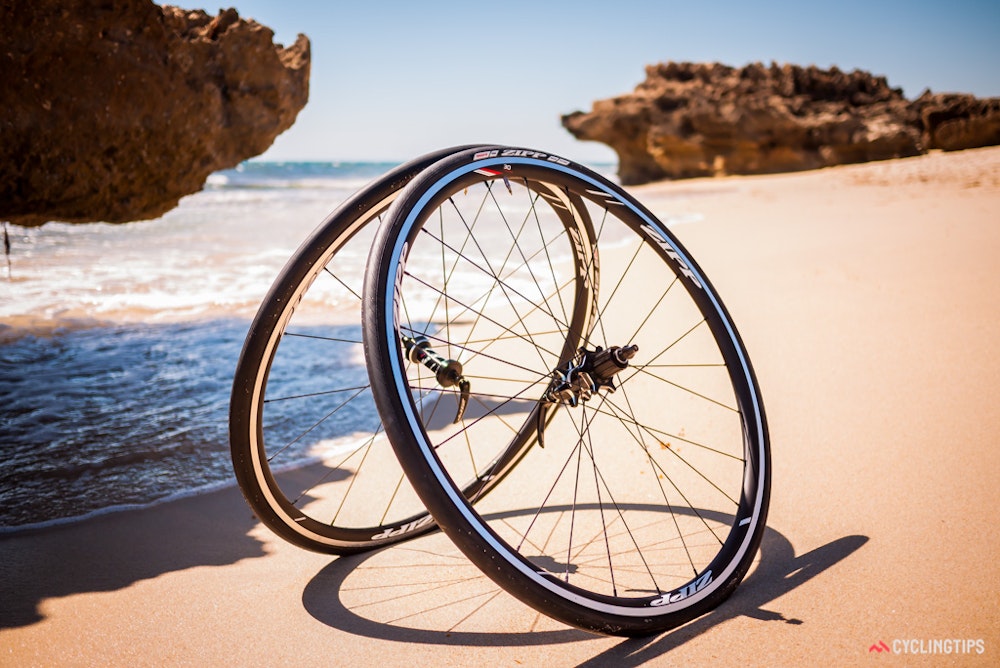
The 30 Course wheelset worked well on the dirt. Indeed, the only thing lacking was the kind of grip that a wider tyre with knobs could have offered. But then, that’s what I find is the biggest appeal when riding a road bike on a dirt path, trying to keep the bike under control while maintaining a decent pace. It’s as thrilling as it is foolhardy, but the 30 Course wheelset never undermined my confidence.
I never suffered with the weight of the 30 Course. I didn’t have any trouble pushing the wheels over sharp pinches and I was always able to establish a steady rhythm for longer climbs. Compared to my regular alloy wheelset (sub-1,400g), the Course 30 wasn’t quite as responsive or nimble, but the difference in performance was relatively minor.
I enjoyed taking long rides on the 30 Course wheelset, and I think that’s where it will shine for most riders. All of the wheelset’s comfort, grip and sturdiness become assets after a few hours, especially if the ride takes in undulating terrain on dead roads. By the end of the review period, the 30 Course had proven itself as a steady and reliable performer.
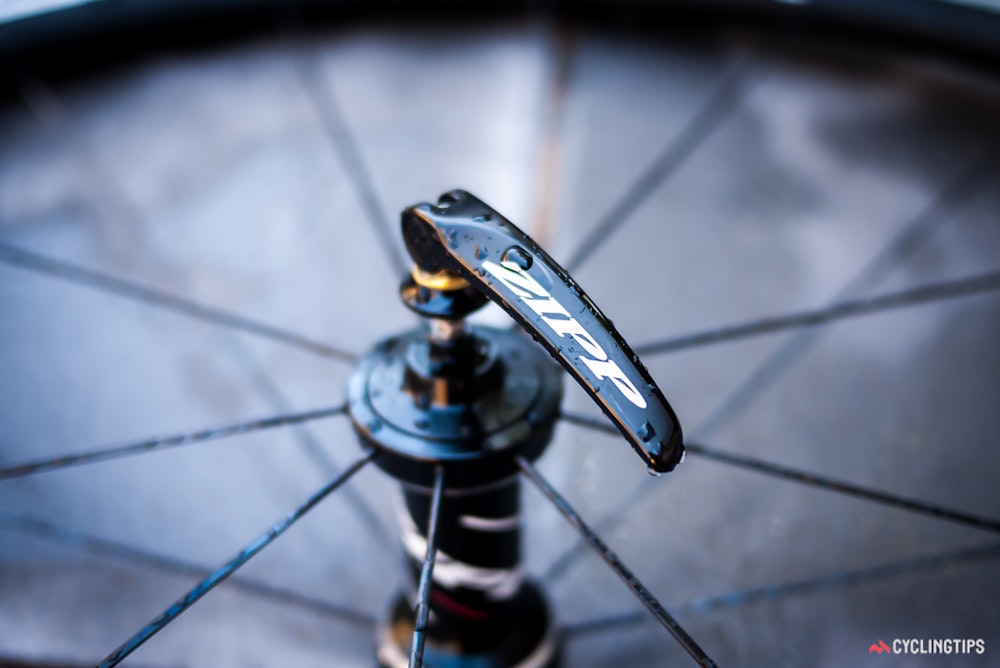
The 30 Course wheelset was very easy to ride in crosswinds, which isn’t surprising for a 26mm tall rim. Zipp’s wind tunnel testing has shown on previous occasions that the Firecrest 202 and 101 rim profiles offer a mild reduction in aerodynamic drag but I didn’t notice any free speed. I’m not dismissing Zipp’s claims, though; given the choice, I’d rather trust in the marginal gains of Zipp’s profile than ride a box section rim.
The machined brake track was glassy to the touch and very smooth under the brake pads. I had no issues with the quality of braking — it was always sure and efficient, typical for an alloy rim in dry conditions. I didn’t get a chance to ride in the rain, but I expect braking distances to increase somewhat, depending on the choice of brake pads.
Zipp continues to adhere to an external cam for its quick release levers — a design the saves weight but leaves the mechanism open to the elements — but at least they’ve refined the shape of the lever to make it easier and more comfortable to use. The new smooth curve and extra length work well to reduce the effort required to clamp the axles with a reasonable amount of force.
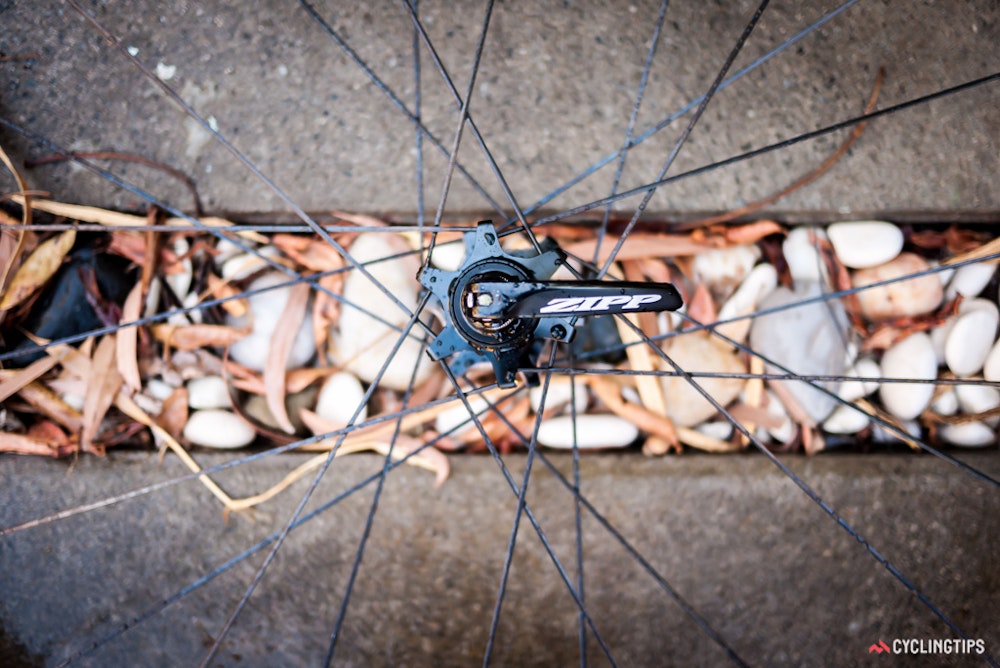
I like that Zipp provides 30 Course clinchers as a tubeless-ready wheelset with a pair of tubeless valves. For gravel riding there is no other choice and, clearly, Zipp understands its target market. For road riders, the benefits of tubeless tyres are much smaller — negligible, perhaps — but by readying the wheels, Zipp makes it a little easier for curious riders to experiment with the system.
FINAL THOUGHTS AND SUMMARY
I have a distinct fondness for wide rims — indeed, I wouldn’t choose anything else — so I found the 30 Course wheelset had a lot of appeal. I appreciated the sturdiness of the wheelset, and while it is a little too heavy for dedicated road use, it has a lot to offer buyers looking for a versatile and robust alloy wheelset (especially if they like to venture off road).
The asking price for the 30 Course puts it at the upper end of the market and in direct competition with custom-built wheelsets. Thus shoppers will have to balance the convenience of a factory build versus the personalisation of a custom wheelset. In this regard, Zipp has done a fine job in developing the 77/177 hubset to offer the same range of compatibility as high-end hubs offered by DT, White Industries, and Tune (among others).
One question that is often overlooked by buyers considering a factory-built wheelset is how readily it can be repaired once the rims or spokes are damaged (or worn out). The 30 Course wheelset doesn’t use a proprietary spoke system and the rims have common drillings, so owners will be able to replace them with aftermarket products at a fraction of the cost of a new wheelset. Such repairability is typical for a custom-built wheelset and it adds value to the 30 Course wheelset as much as it promises to extend the lifespan of the product.
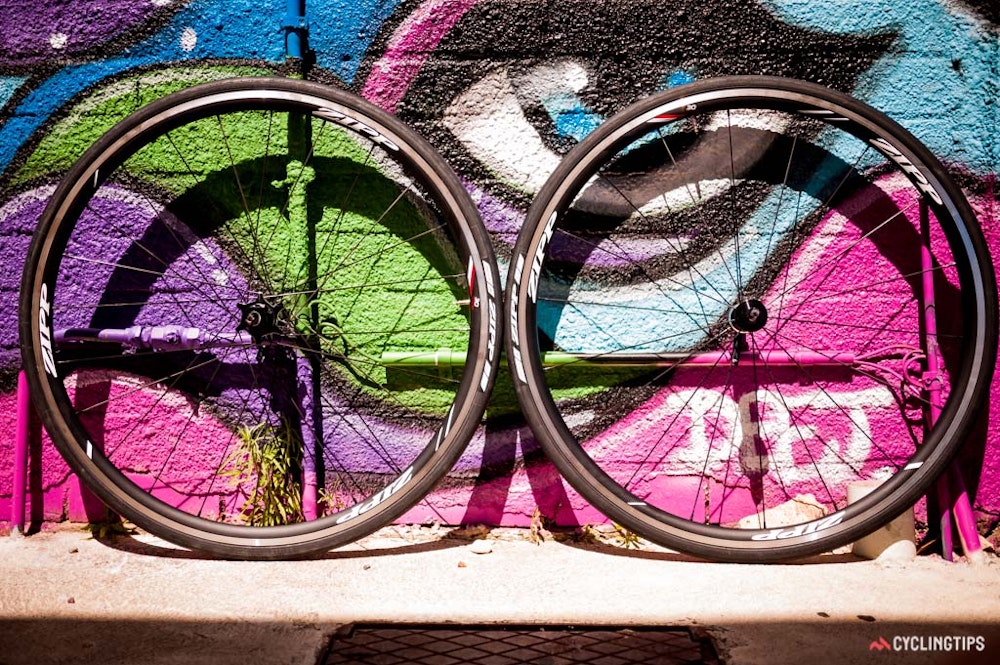
WRAP UP
Zipp’s 30 Course is a fine alloy wheelset that capitalises on the strengths of a wide rim to provide buyers with plenty of comfort and grip. While it is likely too heavy to catch the eye of road racers, it is a robust wheelset that is well suited to long rides and off-road sorties. Zipp has added a large range of options (including through-axle compatibility for the disc brake version) so that it will suit a wide range of bikes and riders' needs. Weight 1,650g sans skewers; RRP: AU$1,599/US$1,000.
This article was originally published on cyclingtips.com





